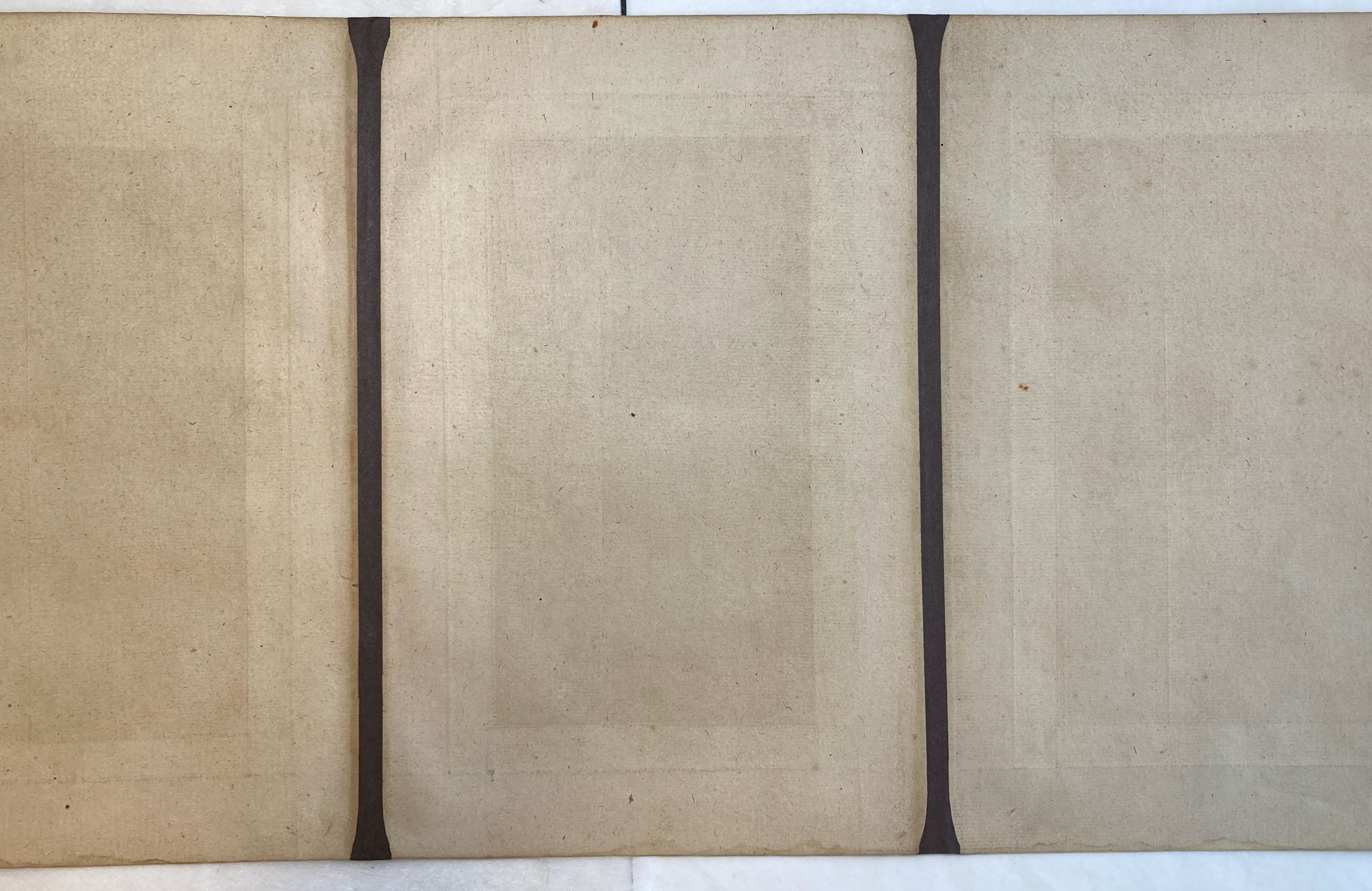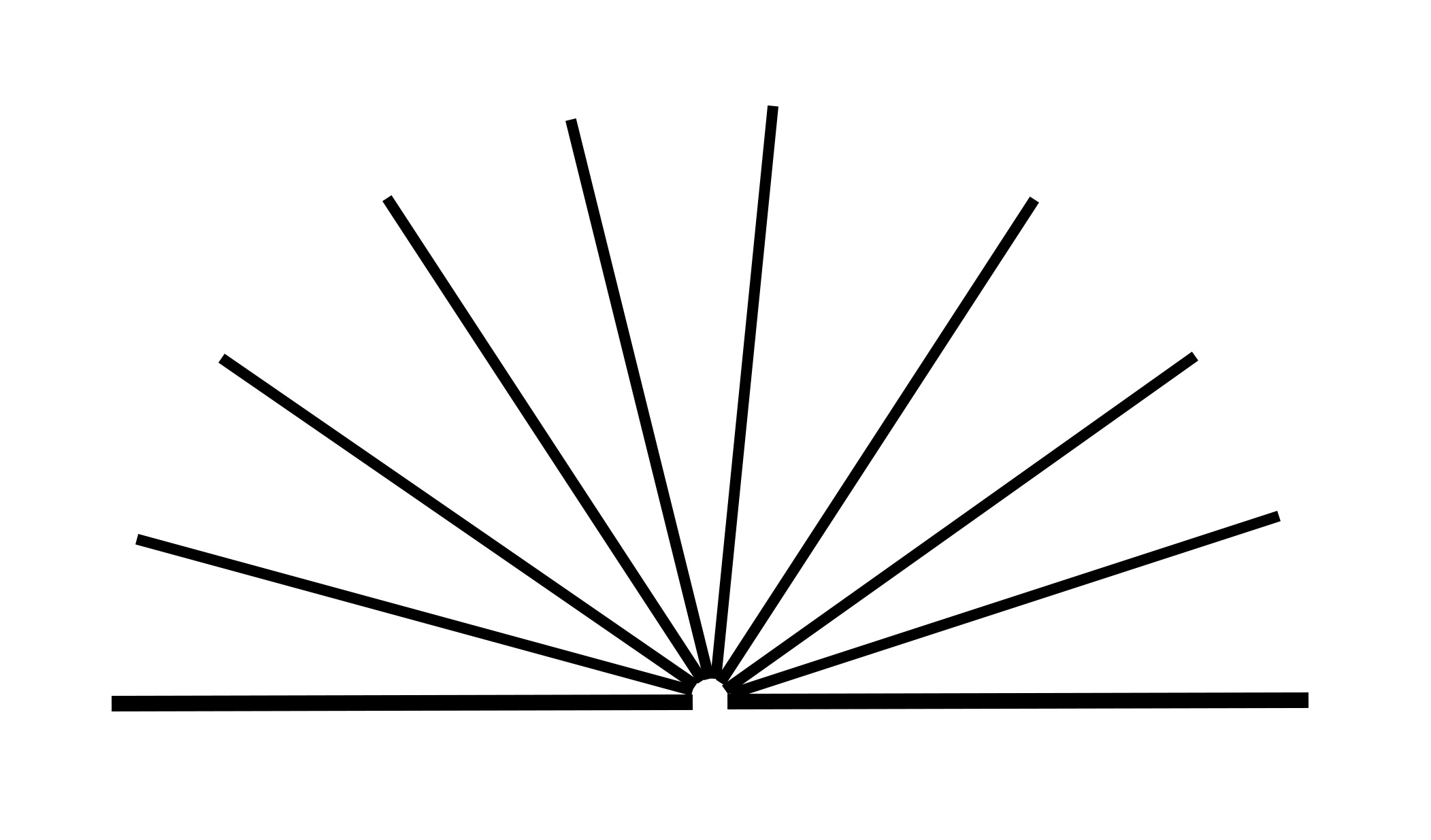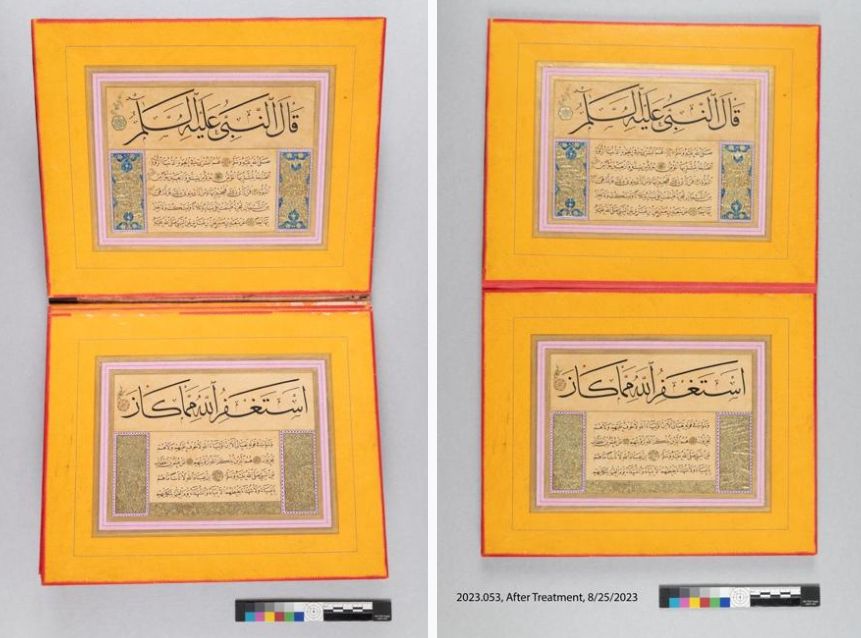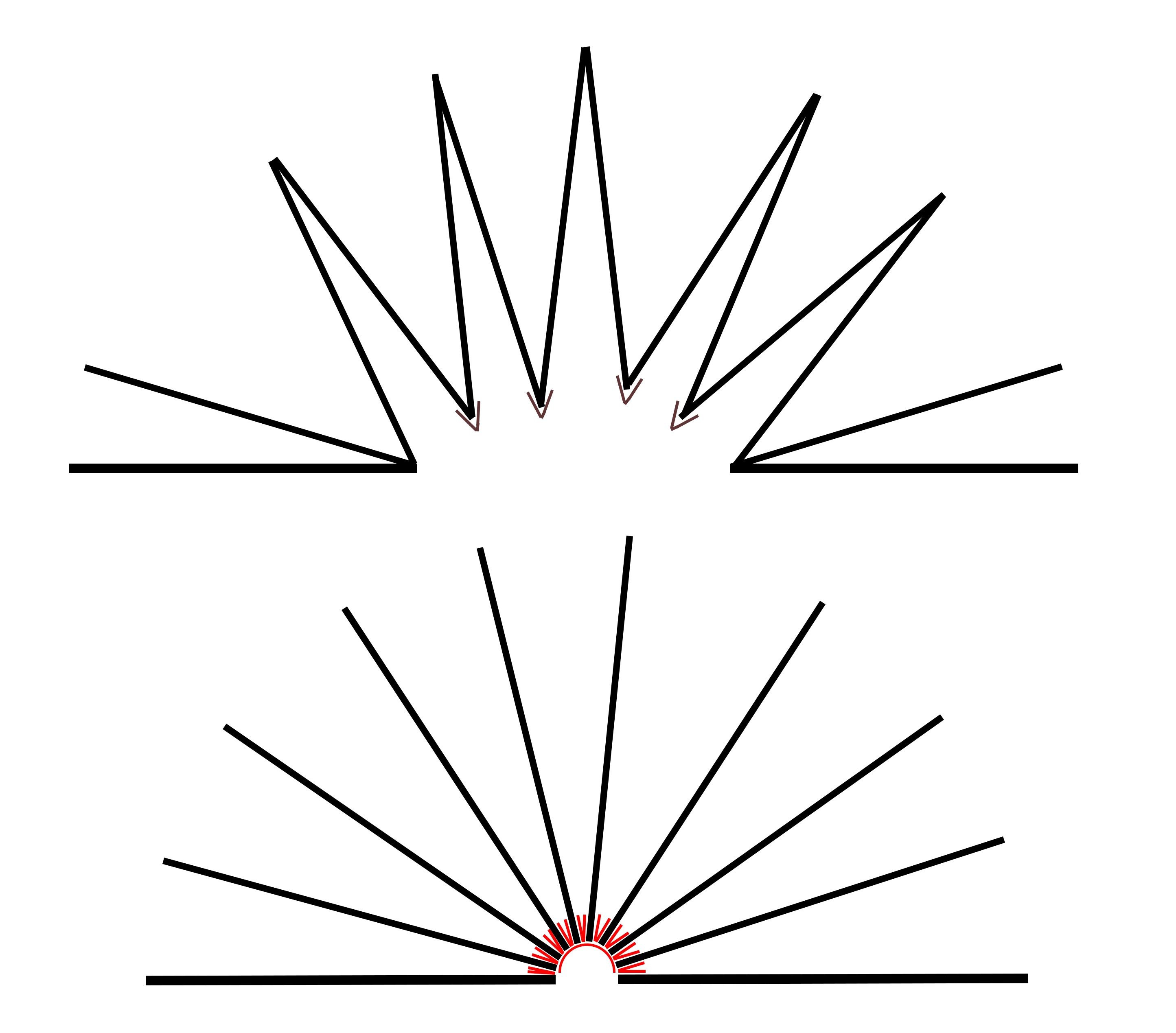Guest post by Katarina Stiller, summer 2023 Cathleen A. Baker Fellow in the U-M Library conservation lab. Katarina is a third year graduate fellow in the Winterthur/University of Delaware Program in Art Conservation currently interning with the University of Iowa Libraries Conservation Lab.
This post describes two calligraphic albums I examined and treated while I was the Cathleen Baker Fellow in Conservation at the U-M Library Conservation Lab. Both albums are part of the Islamic Manuscripts Collection in the University of Michigan’s Special Collections Research Center.
A murakkaa or muraqqaʻ (مرقع) is an album of calligraphy samples or paintings miniatures. Muraqqaʻ is Persian for patched or mended. These types of albums developed a more coherent form by the late 15th c., starting primarily as collection albums made of assemblages from other works. Albums take on two basic forms: the book (simple album) form and the bellows (accordion) form. This post will detail the treatment of two albums, each representing a basic album form.
Both of the albums detailed in this post had damaged hinges. Hinges are the attachment points between textblock leaves or where the book covers meet the spine. These attachment points can weaken over time from environmental conditions, repeated use, and natural aging.
The first album that I treated had the “accordion” form, seen below as a side view diagram.

Schematic drawing of accordion fold format.
This album (Isl. Ms. 235) was likely produced in Istanbul in the 18th century and employs the text of assorted ḥadīth, which are collections of sayings of the prophet Muhammad. The album is made of paper panels that are hinged together in an accordion format with very thin strips of leather. Thin leather, known as skiver in English conservation terminology, was traditionally used and is prone to naturally wearing away over time from use. Many of the leather hinges in this album had either partially or completely torn, resulting in detached leaves.
For this treatment, I realigned the leaves of the book and adhered new hinges to the non-text side of the leaves.

Reinforcing the attachment points with new hinges.
They were added to the non-text side to be a less distracting repair as well as to limit direct contact of the adhesive used on the moisture-sensitive surviving leather attachments, which were originally attached on the text side. For these new hinges, I used a long-fibered paper that was thin and strong. This created hinges that are durable and flexible enough for the leaves to be turned so the book can be fully used without adding significant bulk. The new hinges were toned to match the surviving brown leather hinges, which were kept in place.

Album Isl. Ms. 235 before and after treatment.
The second album that I treated had the “simple album” form, seen below as a side view diagram.

Side view diagram for simple album format.
This album (Isl. Ms. 242) is also from Istanbul though is from the late 19th century. The manuscript was written out by Ottoman calligrapher Hasan Rıza Efendi, a master of naskh and thuluth scripts. Naskh was one of the first Islamic calligraphic scripts to be established and often was used for everyday scribal purposes due to its legibility. Thuluth is an elegant, cursive script known for its sloping lines and use for headings, titles, and epigraphs.
Like the previous album, this album also had detached leaves, though these leaves are much thicker and heavier. The leaves are made up of many laminated paper layers, so they are more like thin, stiff board than flexible paper. There were also some losses to the decorative orange paper that frames the text panels.
For this treatment, I toned repair paper to match the orange, and I adhered these fills to the areas of loss.

Adding fills.
The leaves of the book were realigned, and the new hinges were adhered to both sides. The new hinges were toned to match the original red borders. Because the leaves of this album were heavier than the previous album, a slightly heavier weight repair paper was used to reattach the leaves. A final layer of paper was added to the spine of the textblock after the leaves were reattached as an extra level of support.

Calligraphy album Isl. Ms. 242 before and after treatment.

Difference between the albums with their mends.
Both of these albums can now be safely handled again, and Isl. Ms. 242 is now on display in the Islamic World galleries, at the Detroit Institute of Arts!